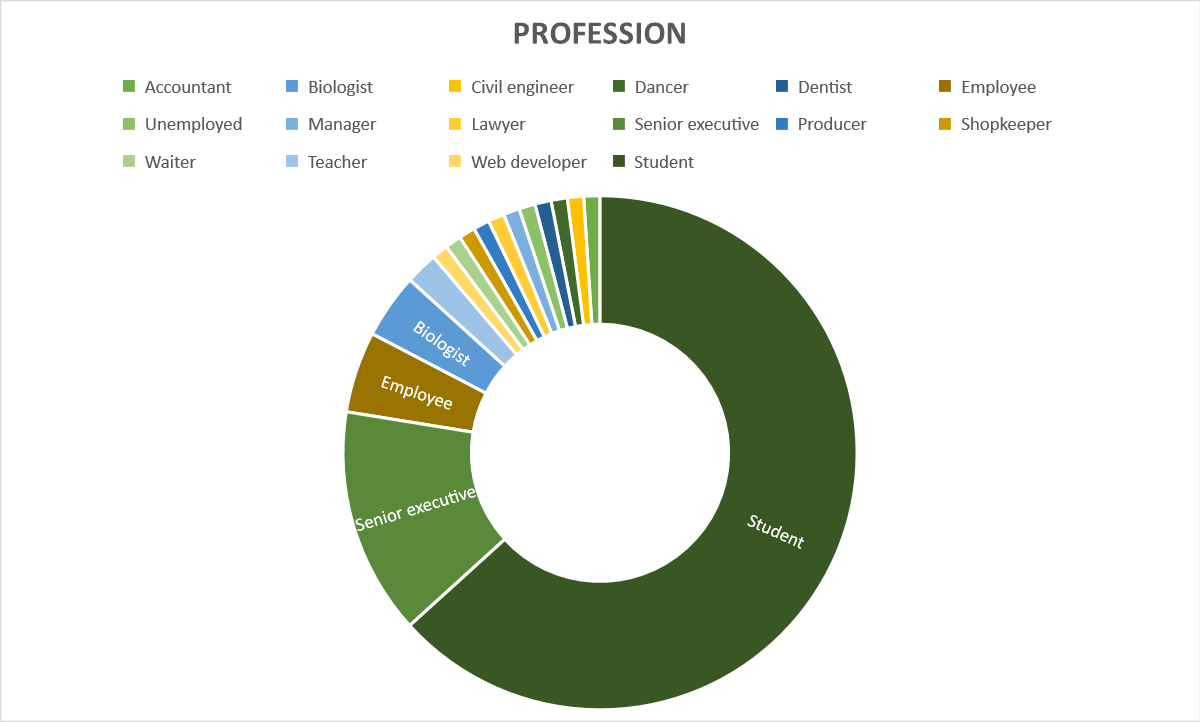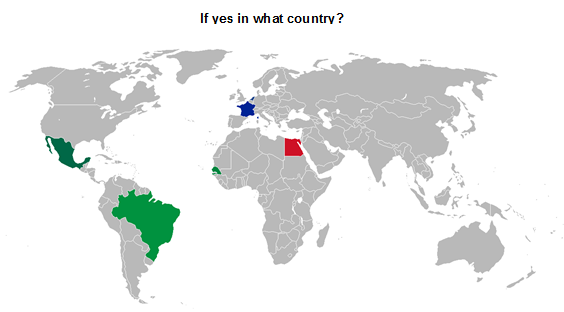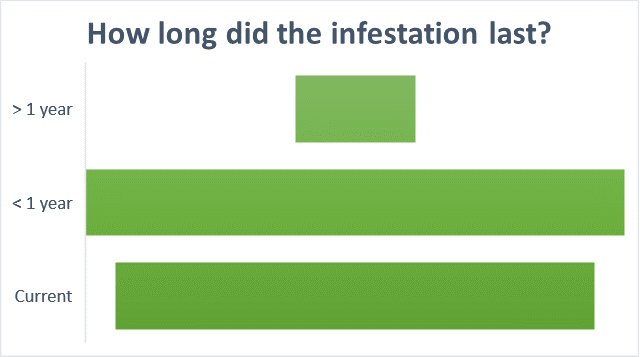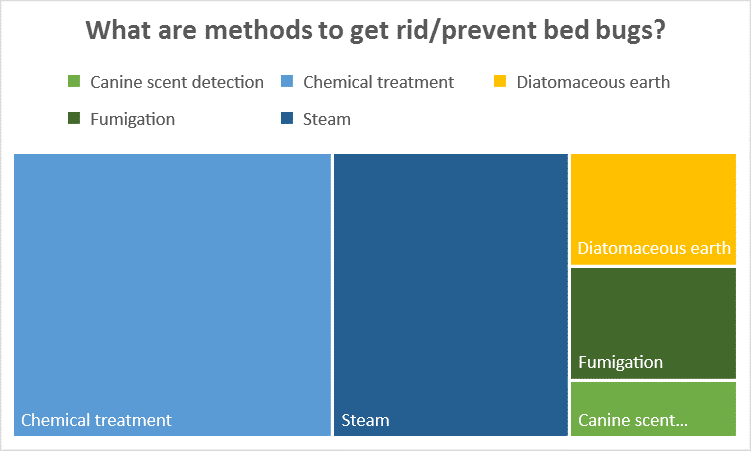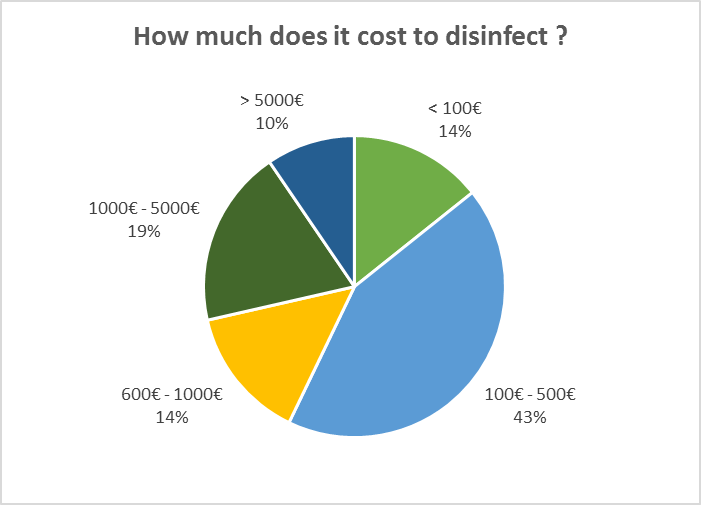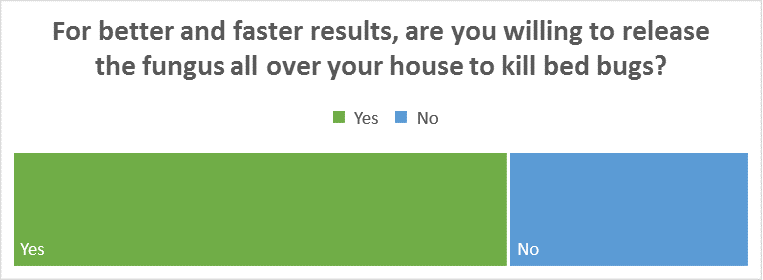(→Surveys) |
|||
| Line 1: | Line 1: | ||
== Surveys == | == Surveys == | ||
Being aware of the fact that none of us had actually been confronted with a bed bug infestation, we had to learn more about the subject. Reading scientific articles and discussing with experts was a first necessary step but it wasn’t enough. We wanted to know about people’s experience as regards bed bugs and to have the general public opinion as for our solution. That’s why we chose to conduct surveys. | Being aware of the fact that none of us had actually been confronted with a bed bug infestation, we had to learn more about the subject. Reading scientific articles and discussing with experts was a first necessary step but it wasn’t enough. We wanted to know about people’s experience as regards bed bugs and to have the general public opinion as for our solution. That’s why we chose to conduct surveys. | ||
| + | |||
| + | [[File:T--Aix-Marseille--surveysophie.png|450px|center]] | ||
To ensure the broadest audience, we made these surveys both in French and in English. Surveys were done through different forms: directly in the street or via google forms that we shared on our crowdfunding platform and with other iGEM teams (tec-Monterrey and Leiden). Here are answers of 131 people: | To ensure the broadest audience, we made these surveys both in French and in English. Surveys were done through different forms: directly in the street or via google forms that we shared on our crowdfunding platform and with other iGEM teams (tec-Monterrey and Leiden). Here are answers of 131 people: | ||
| + | |||
| + | [[File:T--Aix-Marseille--surveyage.png|365px|left]] [[File:T--Aix-Marseille--surveyprofession.png|565px|right]] | ||
As we are a student team, a high proportion of answers were from students, this may cause a bias in the answers and should be taken into account. | As we are a student team, a high proportion of answers were from students, this may cause a bias in the answers and should be taken into account. | ||
| + | |||
| + | [[File:T--Aix-Marseille--surveybedbugsbite.png|450px|center]] | ||
| + | |||
| + | [[File:T--Aix-Marseille--surveycountry.png|450px|center]] | ||
As we can see on these two graphs and this map, people are quite concerned by beg bugs and not only in places where surveys were done (France, Mexico, The Netherlands) but also in Senegal, Egypt and in Brazil. Bed bugs are a worldwide issue. | As we can see on these two graphs and this map, people are quite concerned by beg bugs and not only in places where surveys were done (France, Mexico, The Netherlands) but also in Senegal, Egypt and in Brazil. Bed bugs are a worldwide issue. | ||
Then, we wanted to get a general idea of how people managed bed bug infestations. | Then, we wanted to get a general idea of how people managed bed bug infestations. | ||
| + | |||
| + | [[File:T--Aix-Marseille--surveyinfestationlast.png|450px|center]] | ||
| + | |||
| + | [[File:T--Aix-Marseille--surveymethods.png|450px|center]] | ||
| + | |||
| + | [[File:T--Aix-Marseille--surveypersist.png|450px|center]] | ||
| + | |||
| + | [[File:T--Aix-Marseille--surveycost.png|450px|center]] | ||
These results show that even with current disinfestation methods, the infestation persists in time and current solutions (like chemical treatment, steam, fumigation, diatomaceous earth and canine scent detection) are not efficient and remain very costly as they can sometimes be charged up to 5,000€. | These results show that even with current disinfestation methods, the infestation persists in time and current solutions (like chemical treatment, steam, fumigation, diatomaceous earth and canine scent detection) are not efficient and remain very costly as they can sometimes be charged up to 5,000€. | ||
| − | Knowing that, we presented our concept and asked for people’s preferences. | + | Knowing that, we presented our concept and asked for people’s preferences. |
| + | |||
| + | [[File:T--Aix-Marseille--surveypreference.png|450px|center]] | ||
The real problem that people undergo is the lack of efficiency of existing disinfestation methods. That is what these answers reveal. 45% of respondents care more about an efficient solution than about an affordable or an individual/personal solution. They are concerned about an eco-friendly and a fast concept. | The real problem that people undergo is the lack of efficiency of existing disinfestation methods. That is what these answers reveal. 45% of respondents care more about an efficient solution than about an affordable or an individual/personal solution. They are concerned about an eco-friendly and a fast concept. | ||
| + | |||
| + | [[File:T--Aix-Marseille--surveyGMO.png|450px|center]] | ||
| + | |||
| + | [[File:T--Aix-Marseille--surveyfungus.png|450px|center]] | ||
| + | |||
| + | [[File:T--Aix-Marseille--surveytrap.png|450px|center]] | ||
| + | |||
As GMOs are the heart of our project, we wanted to have their opinion about the use of Genetically Modified Organisms. First of all, we asked them about their knowledge on the subject. As expected, some but not all of them had a poorly defined vision and were quite skeptical. After a clear explanation of our work, they became more sensitive and aware of the GMO definition and more optimistic about it. Obviously, for biosafety and ethical reasons we had already chosen to only use purified components coming from genetically modified organisms such as pheromones from E.coli and chitinase from Beauveria bassiana. Thus no GMOs will be released in the environment. However, we had considered using Beauveria bassiana (a non-harmful fungus currently used in agriculture) in a trap that will spread out across the room thanks to incoming and outgoing bed bugs or directly in the room for a faster result. That was actually the critical point of our project, that’s why public point of view was very important. We were really satisfied with the answers. More than 70% agreed to release a fungus all over their house but almost 60% would rather have the fungus inside a trap even if it takes longer to disinfect. | As GMOs are the heart of our project, we wanted to have their opinion about the use of Genetically Modified Organisms. First of all, we asked them about their knowledge on the subject. As expected, some but not all of them had a poorly defined vision and were quite skeptical. After a clear explanation of our work, they became more sensitive and aware of the GMO definition and more optimistic about it. Obviously, for biosafety and ethical reasons we had already chosen to only use purified components coming from genetically modified organisms such as pheromones from E.coli and chitinase from Beauveria bassiana. Thus no GMOs will be released in the environment. However, we had considered using Beauveria bassiana (a non-harmful fungus currently used in agriculture) in a trap that will spread out across the room thanks to incoming and outgoing bed bugs or directly in the room for a faster result. That was actually the critical point of our project, that’s why public point of view was very important. We were really satisfied with the answers. More than 70% agreed to release a fungus all over their house but almost 60% would rather have the fungus inside a trap even if it takes longer to disinfect. | ||
Finally, thanks to this survey, we have chosen to focus on a trap that combines the presence of a fungus with purified chitinase and pheronomes for a more effective solution that is the key criteria for the general public. | Finally, thanks to this survey, we have chosen to focus on a trap that combines the presence of a fungus with purified chitinase and pheronomes for a more effective solution that is the key criteria for the general public. | ||
Revision as of 12:09, 16 October 2018
Surveys
Being aware of the fact that none of us had actually been confronted with a bed bug infestation, we had to learn more about the subject. Reading scientific articles and discussing with experts was a first necessary step but it wasn’t enough. We wanted to know about people’s experience as regards bed bugs and to have the general public opinion as for our solution. That’s why we chose to conduct surveys.
To ensure the broadest audience, we made these surveys both in French and in English. Surveys were done through different forms: directly in the street or via google forms that we shared on our crowdfunding platform and with other iGEM teams (tec-Monterrey and Leiden). Here are answers of 131 people:
As we are a student team, a high proportion of answers were from students, this may cause a bias in the answers and should be taken into account.
As we can see on these two graphs and this map, people are quite concerned by beg bugs and not only in places where surveys were done (France, Mexico, The Netherlands) but also in Senegal, Egypt and in Brazil. Bed bugs are a worldwide issue. Then, we wanted to get a general idea of how people managed bed bug infestations.
These results show that even with current disinfestation methods, the infestation persists in time and current solutions (like chemical treatment, steam, fumigation, diatomaceous earth and canine scent detection) are not efficient and remain very costly as they can sometimes be charged up to 5,000€. Knowing that, we presented our concept and asked for people’s preferences.
The real problem that people undergo is the lack of efficiency of existing disinfestation methods. That is what these answers reveal. 45% of respondents care more about an efficient solution than about an affordable or an individual/personal solution. They are concerned about an eco-friendly and a fast concept.
As GMOs are the heart of our project, we wanted to have their opinion about the use of Genetically Modified Organisms. First of all, we asked them about their knowledge on the subject. As expected, some but not all of them had a poorly defined vision and were quite skeptical. After a clear explanation of our work, they became more sensitive and aware of the GMO definition and more optimistic about it. Obviously, for biosafety and ethical reasons we had already chosen to only use purified components coming from genetically modified organisms such as pheromones from E.coli and chitinase from Beauveria bassiana. Thus no GMOs will be released in the environment. However, we had considered using Beauveria bassiana (a non-harmful fungus currently used in agriculture) in a trap that will spread out across the room thanks to incoming and outgoing bed bugs or directly in the room for a faster result. That was actually the critical point of our project, that’s why public point of view was very important. We were really satisfied with the answers. More than 70% agreed to release a fungus all over their house but almost 60% would rather have the fungus inside a trap even if it takes longer to disinfect.
Finally, thanks to this survey, we have chosen to focus on a trap that combines the presence of a fungus with purified chitinase and pheronomes for a more effective solution that is the key criteria for the general public.



